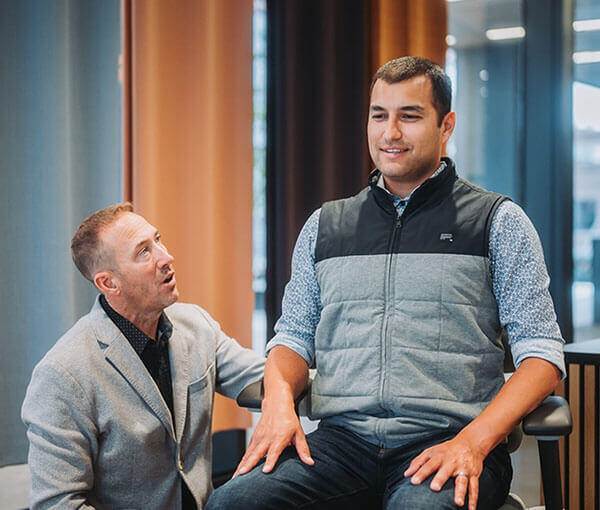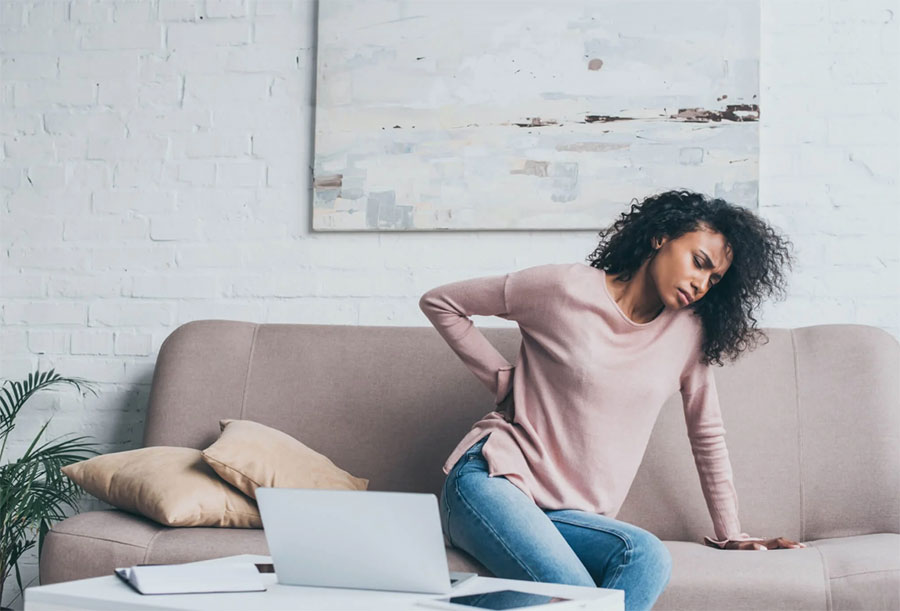When it comes to choosing the right seat cushion, many of us are bound by the misconception that only thin and hard cushions offer the proper support. This belief, however, is not only outdated but also unsupported by recent scientific findings. Let's dive into the world of seat cushion design to understand why a cushion can be both soft and supportive, enhancing our sitting experience in ways we might not have imagined.

The Evolution of Seat Cushions
Traditionally, seat cushions have been static, crafted from a variety of materials. Research by Makhsous et al. (2007) highlights that while these cushions have their benefits, they fall short in providing dynamic pressure redistribution.1 This limitation means that over time, these static cushions may lose their efficiency in reducing sitting load and alleviating pressure on soft tissues. When sitting for long periods of time on a static or hard/firm surface, the body responds to the high-pressure points under the sit bones by rolling the pelvis back to alleviate pain. This results in a slouched position that creates pain in other areas over time.
The Importance of Pressure Distribution
A crucial aspect of seat cushion design, as outlined by Kolich & Taboun (2004), is the even and symmetrical distribution of pressure around the ischial tuberosities, commonly known as sitting bones.2 This is where the common misconception about thin and hard cushions being more supportive comes into play. Contrary to this belief, studies, including those by Mohanty and Mahapatra, have shown that soft cushions, particularly those made from polyurethane foam, provide less stress on these critical pressure points and delay the stiffening of muscles in the tissue.3 The reason for this is the immersion properties of a softer foam. By allowing the sit bones, the buttocks, and the upper legs to immerse into the foam, it increases pressure distribution over a larger surface area. This reduces high pressure areas.
Contours for Pressure Distribution and Stability
Another important feature for a softer cushion to be pressure relieving and supportive is the contours. Contouring on a seat cushion plays a crucial role in providing comfort, support, and proper body alignment. Contours that match the human body, along with the immersion properties of softer foam, help to distribute pressures evenly on the body, reducing high pressure points that can lead to discomfort and even pain. This helps to prevent fatigue and improve seated balance, allowing the user to sit for longer periods of time without experiencing discomfort or strain.4

One study on patients in wheelchairs with paraplegia and spinal cord injuries found that seat cushions with well-designed contours significantly improved postural control and reduced pressure injuries at the human-seat interface.5 Another study focused on healthy individuals sitting on different seating surfaces, such as automobile seats and agricultural machinery seats, and found that seat cushions with proper contours contributed to better postural control and reduced discomfort.6
Material Matters: The Role of High-Quality Foam
When it comes to achieving a soft and stable seat surface, the type of foam is key. It's essential to note that not all foams are created equal, even though they are essentially a blend of chemicals poured into a mold. The quality of the foam used is crucial for the type of support the seat can provide without collapsing or bottoming out over time.
The quality of a foam is determined by its density, which should not be confused with firmness, although the terms are often used interchangeably. Density is expressed by measuring the weight of a single cubic foot of foam (ASTM standards). For a high-quality foam designed for all-day, everyday use, a density range of 1.5-3lbs per cubic foot (pcf) is ideal.
When a manufacturer understands these principles of supportive sitting on a soft surface, it changes the experience of all day sitting. Contrary to what office chair manufacturers have been doing for years, we are not doomed to sit on hard seats!
The Anthros Difference
Using 70+ years of combined experience in wheelchair seating, Anthros has designed a revolutionary office chair with a seat cushion of unmatched comfort. The seat was designed using all the principles and more to achieve a sitting experience like none other.
Highest quality foam (3lbs pcf).
Contours designed using anthropometric data and 3D human modeling.
Cloudfloat technology under the sit bones designed using anthropometric data and 3D human modeling.
Cloudtex technology- A dual layer fabric between the outer fabric and the foam to allow for smooth immersion into the cushion, eliminating the shear between the outer layer and foam.
The world of seat cushion design is evolving, with science leading the way in debunking outdated misconceptions. As we've seen, a seat cushion doesn't need to be thin and hard to be effective. The right design, material, and understanding of the human body can create a cushion that's both soft and supportive, significantly enhancing our sitting experience. Modern cushion design offers comfort and support, making every seat a sanctuary of well-being.
Remember, your sitting comfort is not just about the cushion, but how it interacts with your body and posture. Stay tuned for more insights and tips on how to create a comfortable and healthy sitting environment.
If you are looking to improve posture and decrease pain while sitting, look no further than Anthros. Anthros is the only chair in the world that is guaranteed to improve posture or your money back. The science-backed, patented design is registered with the FDA as a posture-improving chair and is proven to have the lowest pressure (most comfortable) cushion on the planet (verified by university testing).
Take the next step to reducing pain, increasing comfort, and maximizing performance!
References:
1. Makhsous, M., Rowles, D., Rymer, W Z., Bankard, J., Nam, E K., Chen, D., & Lin, F. (2007, July 1). Periodically Relieving Ischial Sitting Load to Decrease the Risk of Pressure Ulcers. https://scite.ai/reports/10.1016/j.apmr.2007.03.017
2. Kolich, M., & Taboun, S M. (2004, June 22). Ergonomics modelling and evaluation of automobile seat comfort. https://scite.ai/reports/10.1080/0014013042000193273
3. Bermamet, H. (2022, July 26). Investigating the Effect of Seat Features and Cushion Material on Seat Comfort using Finite Element Analysis. https://scite.ai/reports/10.46254/eu05.20220315
4. Brienza, D M., Chung, K., Brubaker, C E., Wang, J., Kang, T E T., & Lin, C. (1996, June 1). A system for the analysis of seat support surfaces using surface shape control and simultaneous measurement of applied pressures. https://doi.org/10.1109/86.506407
5. Nag, P K., Nag, A., Vyas, H., & Shah, P. (2013, January 1). Disparity of a Seat Cushion and Its Influence on Postural Control. https://scite.ai/reports/10.1080/10803548.2013.11077015
6. Li, W., Mo, R., Yu, S., Chu, J., Hu, Y., & Wang, L. (2020, September 17). The effects of the seat cushion contour and the sitting posture on surface pressure distribution and comfort during seated work. https://doi.org/10.13075/ijomeh.1896.01582
7. Bahasuan, H H., & Kodrat, D S. (2021, March 22). Customer Preference of Attributes of Skema Wooden Chair Furniture. https://scite.ai/reports/10.18502/kss.v5i5.8799
8. Chan, D., Laporte, D., & Sveistrup, H. (1999, February 1). Rising from Sitting in Elderly People, Part 2: Strategies to Facilitate Rising. https://scite.ai/reports/10.1177/030802269906200206
9. Li, M., Zhou, X., Wu, Z., & Zhang, J. (2018, July 11). Cushion stiffness of upholstered wooden seat foundations when subjected to human sitting forces. https://scite.ai/reports/10.15376/biores.13.3.6542-6554
10. Pipkin, L., & Sprigle, S. (2008, December 1). Effect of model design, cushion construction, and interface pressure mats on interface pressure and immersion. https://scite.ai/reports/10.1682/jrrd.2007.06.0089
Recent Post

Four Lessons About Seating Everyone Can Learn from Wheelchair Users
September 18, 2025Working with wheelchair users has been an...

People Over Profits: Why Anthros Puts Comfort and Care First
September 17, 2025At Anthros, our mission is simple: to put people...









